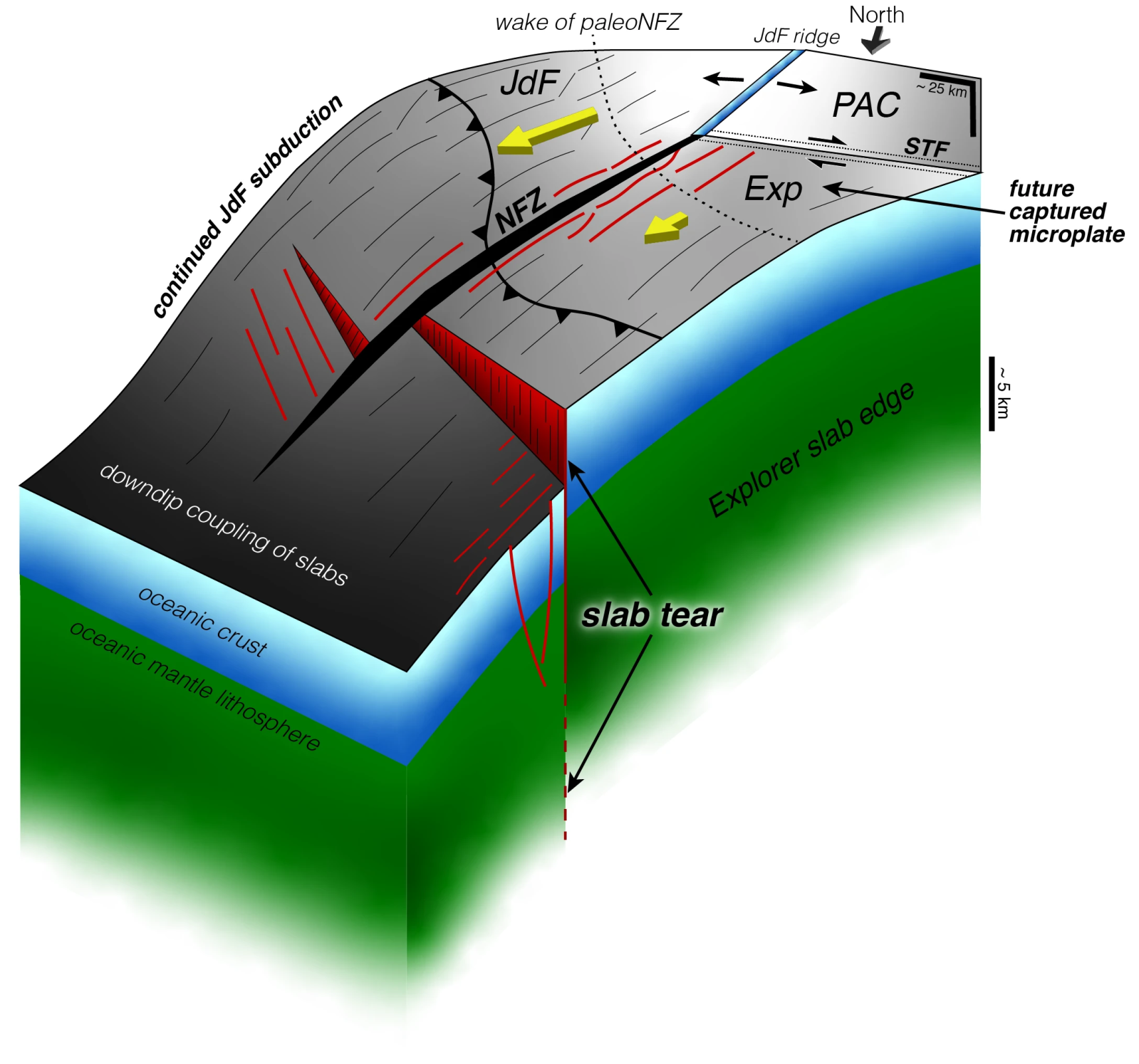⚠️ Unprecedented: Live observation of tectonic plate subduction
Published by Cédric,
Article author: Cédric DEPOND
Source: Science Advances
Other Languages: FR, DE, ES, PT
Article author: Cédric DEPOND
Source: Science Advances
Other Languages: FR, DE, ES, PT
Follow us on Google News (click on ☆)
For the first time, a scientific team has documented the progressive fragmentation of a tectonic plate during subduction. This discovery, made possible by advanced seismic imaging techniques, allows us to visualize for the first time the life cycle of the forces that shape our planet. The observed phenomenon challenges several established hypotheses regarding the end of subduction zones.
This study focused on the Cascadia region, where the Juan de Fuca plate is diving beneath the North American plate. The researchers used a sophisticated method of seismic reflection, comparable to an ultrasound of deep Earth layers. The CASIE21 project, funded by the National Science Foundation, generated high-resolution images revealing previously unknown fractures within the oceanic plate. These data were correlated with precise analysis of regional seismic activity.

The Cascadia subduction zone, where the Juan de Fuca (JdF) and Explorer (Exp) plates are slowly diving beneath the North American plate. Plate fragments are detaching while the rest continues to dive until the next rupture.
The observed fragmentation process
Analysis of seismic images revealed massive tears crossing the oceanic plate. The researchers identified significant vertical displacement where a segment of the plate experienced a subsidence of about three miles (five kilometers). This deformation results from the existence of an active fault that is progressively fragmenting the lithospheric structure. The plate is not yet completely broken, but the process appears to be well underway according to observations.
Seismological recordings perfectly corroborate the imaging data. Along a 47-mile (75-kilometer) tear, scientists noted a heterogeneous distribution of seismic activity. Some segments show residual seismicity, while others display characteristic seismic silence. This disparity is explained by the different stages of rupture progression in each section. The portions that have already detached no longer generate earthquakes.
The research demonstrates that the end of subduction occurs through an episodic and segmented mechanism. Transform boundaries, these faults where plates slide laterally, play a determining role in this process. They act as natural scissors, progressively cutting the plate perpendicular to the subduction axis. Each isolated fragment then becomes an independent microplate, while subduction continues in adjacent segments.
Implications for geological understanding
This fragmentation model sheds light on several persistent geological puzzles. Off the coast of Baja California, the presence of fossil microplates, remnants of the ancient Farallon plate, had until now found an incomplete explanation. The mechanism observed in Cascadia now provides a solid interpretive framework for these abandoned structures. The similarity of processes suggests a universality of the segmented cessation phenomenon in subduction zones.
The formation of mantle windows represents a direct consequence of this fragmentation process. When a plate segment detaches, it allows the hotter upper mantle to rise toward the surface. This phenomenon generates atypical volcanic activity, whose signature is found in the geological record. The age sequence of volcanic rocks in certain regions corresponds perfectly to this model of progressive tearing.
Understanding this process offers new perspectives for seismic hazard assessment. Although the short-term risk remains unchanged for the Pacific Northwest region, this discovery significantly improves the modeling of complex seismic behaviors. How these tears influence the propagation of seismic ruptures is becoming a priority field of investigation for seismologists.